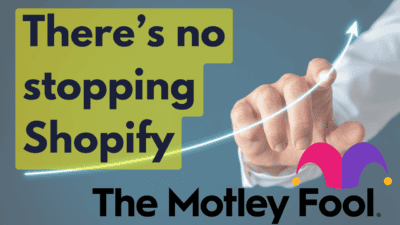Want to invest in the next Amazon (NASDAQ:AMZN)? There’s one Canadian company already on its way.
Over the past five years, Amazon stock has nearly quadrupled. The company I’m talking about, however, saw shares skyrocket by almost 5,000% over the same period.
But the story isn’t over yet. There could another 1,000% in additional upside. This is your chance to get involved.
Understand what makes Amazon great
Few stocks ever achieve $1 trillion valuations. When they do, it pays to understand why.
Amazon’s immense success all ties back to its position as an aggregator.
“When Amazon started, the company followed a traditional retail model, just online. That is, Amazon bought products at wholesale, then sold them to customers,” explained Ben Thompson, founder of Stratechery. “Amazon’s sales proceeded to grow rapidly. This growth allowed Amazon to build out its fulfillment network.”
The secret sauce was created when the company made its infrastructure available to everyone. Suddenly, anyone was a power seller.
“In 2006 Amazon announced Fulfillment by Amazon, wherein 3rd-party merchants could use those fulfillment centers too,” Thompson stressed. “Their products would not only be listed on Amazon.com, they would also be held, packaged, and shipped by Amazon.”
This decision created the e-commerce giant we know today.
When buying on Amazon, shoppers are often unaware of who actually makes the product. All they care about is that their consumption comes on time and as expected. Amazon harnesses the power of millions of merchants from around the world, arming them with storage and fulfillment capabilities that only it has.
“It is all but impossible to beat an aggregator head-on,” Thompson concluded. “The solution instead is to build a platform.”
This stock can truly soar
If Amazon is an aggregator, its biggest competition will come from a platform. No company has a bigger lead than Shopify (TSX:SHOP)(NYSE:SHOP).
But what exactly is the difference between an aggregator and a platform?
“At first glance, Shopify isn’t an Amazon competitor at all: after all, there is nothing to buy on Shopify.com. And yet, there were 218 million people that bought products from Shopify without even knowing the company existed,” Thompson highlighted.
An aggregator brings buyers and sellers together to one place. A platform, meanwhile, brings them together to one technology.
“The difference is that Shopify is a platform,” Thompson said. “Instead of interfacing with customers directly, 820,000 third-party merchants sit on top of Shopify and are responsible for acquiring all of those customers on their own.”
Bottom line
If you’ve purchased from Amazon, you’re likely aware of that fact. But if you’ve purchased through Shopify, you may have no idea. Shopify’s e-commerce platform operates in the background. It’s like the indie version of Amazon.
To be clear, there’s room for both companies to succeed. Positioning them as direct competitors is a bit unfair. Both can attain multi-trillion-dollar valuations based on current digital shopping figures alone, and those numbers will surely rise.
Right now, Shopify is valued at $150 billion. Amazon is valued at 10 times the price. Expect that gap to close in 2021.







